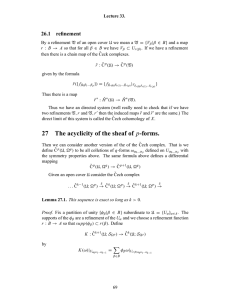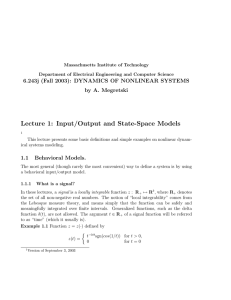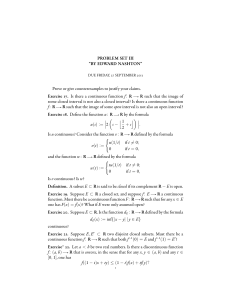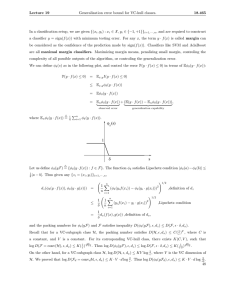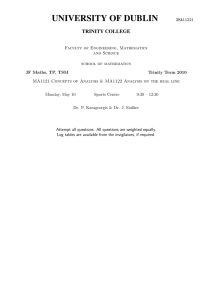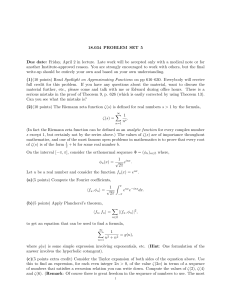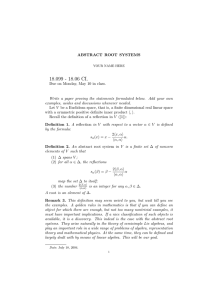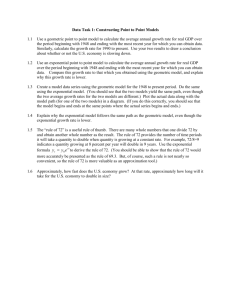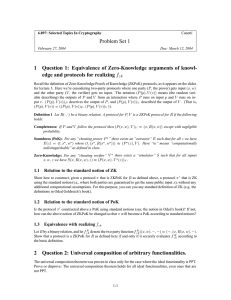Memoryless Property
advertisement
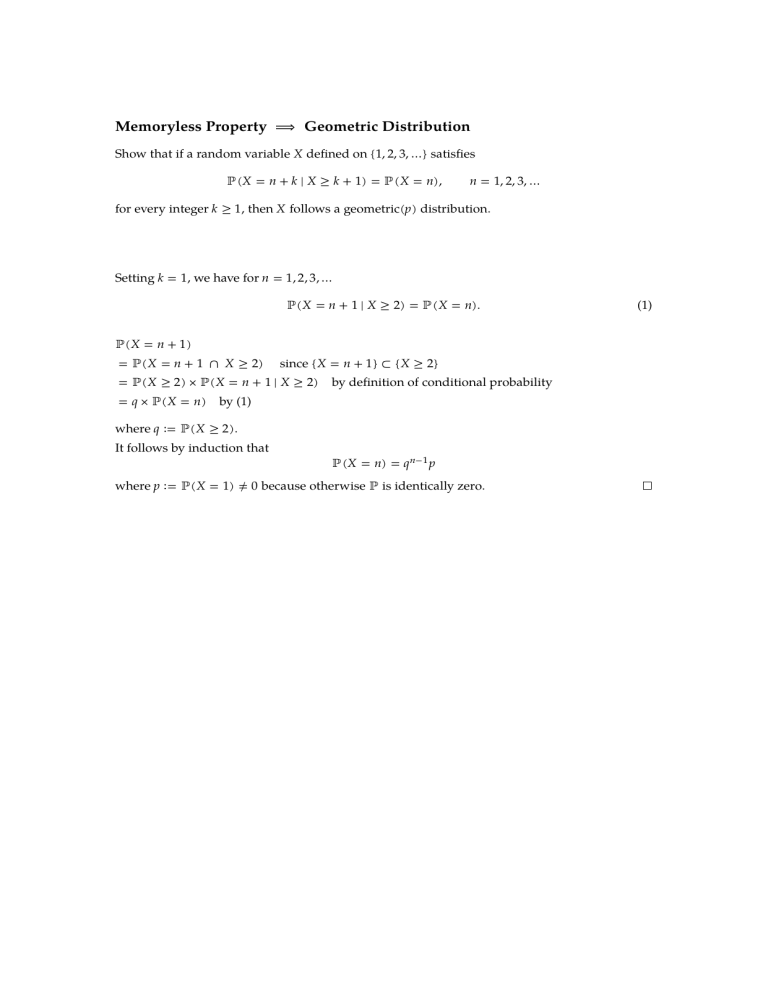
Memoryless Property ⟹ Geometric Distribution
Show that if a random variable 𝑋 defined on {1, 2, 3, …} satisfies
ℙ(𝑋 = 𝑛 + 𝑘 | 𝑋 ≥ 𝑘 + 1) = ℙ(𝑋 = 𝑛),
𝑛 = 1, 2, 3, …
for every integer 𝑘 ≥ 1, then 𝑋 follows a geometric(𝑝) distribution.
Setting 𝑘 = 1, we have for 𝑛 = 1, 2, 3, …
ℙ(𝑋 = 𝑛 + 1 | 𝑋 ≥ 2) = ℙ(𝑋 = 𝑛).
ℙ(𝑋 = 𝑛 + 1)
= ℙ(𝑋 = 𝑛 + 1 ∩ 𝑋 ≥ 2)
since {𝑋 = 𝑛 + 1} ⊂ {𝑋 ≥ 2}
= ℙ(𝑋 ≥ 2) × ℙ(𝑋 = 𝑛 + 1 | 𝑋 ≥ 2)
= 𝑞 × ℙ(𝑋 = 𝑛)
by definition of conditional probability
by (1)
where 𝑞 ∶= ℙ(𝑋 ≥ 2).
It follows by induction that
ℙ(𝑋 = 𝑛) = 𝑞u�−1 𝑝
where 𝑝 ∶= ℙ(𝑋 = 1) ≠ 0 because otherwise ℙ is identically zero.
(1)
Memoryless Property ⟹ Exponential Distribution
Show that if a continuous random variable 𝑋 defined on ℝ≥0 satisfies
ℙ(𝑋 > 𝑡0 + 𝑡 | 𝑋 > 𝑡0 ) = ℙ(𝑋 > 𝑡),
for every 𝑡0 ≥ 0, then 𝑋 follows an exponential(𝜆) distribution.
𝑡≥0
ℙ(𝑋 > 𝑡) × ℙ(𝑋 > 𝑡0 )
= ℙ(𝑋 > 𝑡0 + 𝑡 | 𝑋 > 𝑡0 ) × ℙ(𝑋 > 𝑡0 ) by given equality
= ℙ(𝑋 > 𝑡0 + 𝑡 ∩ 𝑋 > 𝑡0 ) by definition of conditional probability
= ℙ(𝑋 > 𝑡0 + 𝑡)
since {𝑋 > 𝑡0 + 𝑡} ⊂ {𝑋 > 𝑡0 }.
Define the survival function 𝐺(𝑥) = ℙ(𝑋 > 𝑥). Then we have the semigroup property
𝐺(𝑡 + 𝑡0 ) = 𝐺(𝑡) ⋅ 𝐺(𝑡0 ).
We see that 𝐺(0) = 1 by setting 𝑡0 = 0.
(2)
𝐺 must be differentiable by continuity of 𝑋 and the Fundamental Theorem of Calculus, so we
can fix 𝑡 and differentiate both sides of (2) w.r.t 𝑡0 using the Chain Rule:
In particular, setting 𝑡0 = 0 gives
𝐺′ (𝑡 + 𝑡0 ) = 𝐺(𝑡) ⋅ 𝐺′ (𝑡0 )
𝐺′ (𝑡) = 𝐺(𝑡) ⋅ 𝐺′ (0).
Therefore, letting 𝜆 = −𝐺′ (0), we have
𝐺′ (𝑡) = −𝜆𝐺(𝑡),
which has solution 𝐺(𝑡) = 𝑒−u�u� as required.
𝐺(0) = 1
Since 𝐺 is a decreasing function, we must have 𝜆 > 0.
